
本文大多截图出自于:http://c.biancheng.net/cpp/shell/
现在大多数企业都是使用linux作为服务器,不仅是linux是开源系统,更是因为linux比windows更安全。但是由于管理员的安全意识不全或者疏忽,导致linux的敏感端口和服务没有正确的配置,可能会被恶意利用,所以需要进行基线加固。
1.基线
即安全基线配置,诸如操作系统、中间件和数据库的一个整体配置,这个版本中各项配置都符合安全方面的标准。
比如在系统安装后需要按安全基线标准,将新机器中各项配置调整到一个安全、高效、合理的数值。
2.基线扫描
使用自动化工具、抓取系统和服务的配置项。将抓取到的实际值和标准值进行对比,将不符合的项显示出来,最终以报告
的形式体现出扫描结果有的工具将配置采集和配置对比分开,通过自动化脚本采集配置后再通过特别的软件转换为适合人类阅读的文档
3.基线加固自动化脚本的编写
本篇文章主要是记录和学习安全加固脚本,首先放几张安全加固shell脚本的命令语法:
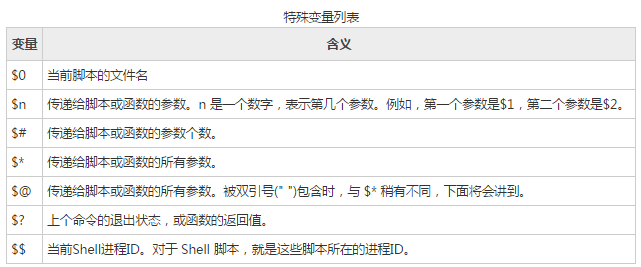
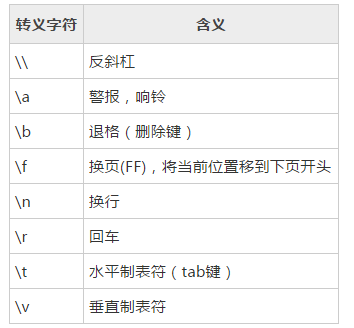
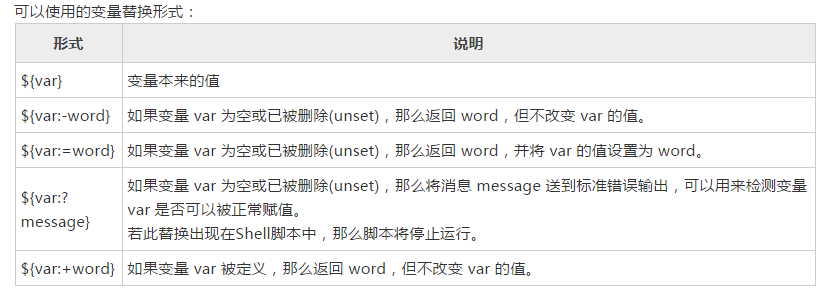





基本命令语法介绍完了,借用网上的脚本来学习:
在执行脚本前需要提前做好备份:
#!/bin/bash
cp /etc/login.defs /etc/login.defs.bak
cp /etc/security/limits.conf /etc/security/limits.conf.bak
cp /etc/pam.d/su /etc/pam.d/su.bak
cp /etc/profile /etc/profile.bak
cp /etc/issue.net /etc/issue.net.bak
cp /etc/shadow /etc/shadow.bak
cp /etc/passwd /etc/passwd.bak
cp /etc/pam.d/passwd /etc/pam.d/passwd.bak
cp /etc/pam.d/common-password /etc/pam.d/common-password.bak
cp /etc/host.conf /etc/host.conf.bak
cp /etc/hosts.allow /etc/hosts.allow.bak
cp /etc/ntp.conf /etc/ntp.conf.bak
cp -p /etc/sysctl.conf /etc/sysctl.conf.bak
echo "============备份完成=================="
1.检查是否设置口令更改最小间隔天数

MINDAY=`cat -n /etc/login.defs | grep -v ".*#.*"| grep PASS_MIN_DAYS|awk '{print $1}'`
sed -i ''$MINDAY's/.*PASS_MIN_DAYS.*/PASS_MIN_DAYS 6/' /etc/login.defs
echo "检查口令更改最小间隔天数完成"
2.检查是否设置口令过期前警告天数

WARNAGE=`cat -n /etc/login.defs | grep -v ".*#.*"| grep PASS_WARN_AGE|awk '{print $1}'`
sed -i ''$WARNAGE's/.*PASS_WARN.*/PASS_WARN_AGE 30/' /etc/login.defs
echo "检查口令过期前警告天数完成"
3.检查口令生存周期

MAXDAY=`cat -n /etc/login.defs | grep -v ".*#.*"| grep PASS_MAX_DAYS|awk '{print $1}'` sed -i ''$MAXDAY's/.*PASS_MAX.*/PASS_MAX_DAYS 90/' /etc/login.defs
echo "检查口令生存周期完成"
4.检查口令最小长度

MINLEN=`cat -n /etc/login.defs | grep -v ".*#.*"| grep PASS_MIN_LEN|awk '{print $1}'` sed -i ''$MINDAY's/.*PASS_MIN_LEN.*/PASS_MIN_ LEN 6/' /etc/login.defs
echo "检查口令最小长度"
5.检查是否设置grub,lilo密码

grub="/etc/menu.lst"
if [ ! -x "$grub" ];then
touch "$grub"
echo password=123456 >> "$grub"
else
echo password=123456 >> "$grub"
fi
lilo="/etc/lilo.conf"
if [ ! -x "$lilo" ];then
touch "$lilo"
echo password=123456 >> "$lilo"
else
echo password=123456 >> "$lilo"
fi
6.检查是否设置core
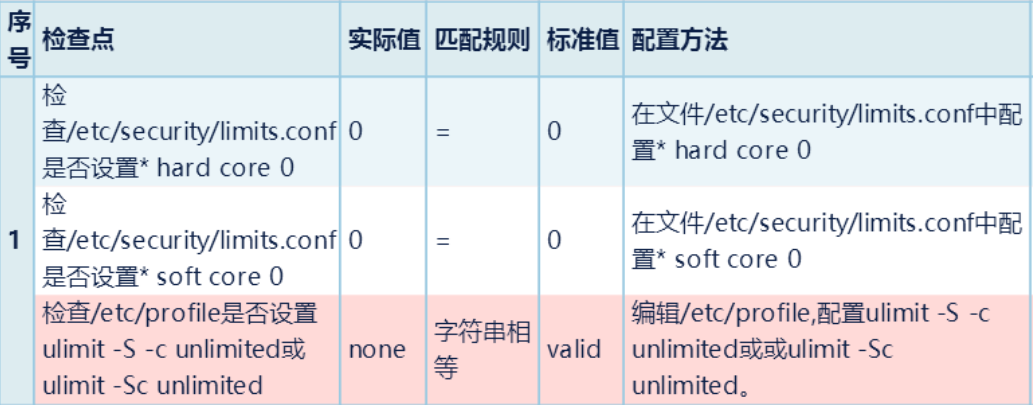
c=`cat -n /etc/security/limits.conf | grep "#root" | awk '{print $1}'`
d=`cat -n /etc/security/limits.conf | grep "#root" | awk '{print $5}'`
sed -i ''$c' s/$d/0/g' /etc/security/limits.conf
echo "设置* hard core 0完成"
e=`cat -n /etc/security/limits.conf | grep soft | grep core | awk '{print $1}'`
f=`cat -n /etc/security/limits.conf | grep soft | grep core | awk '{print $5}'`
sed -i ''$e' s/'$f'/0/g' /etc/security/limits.conf
echo "设置* soft core 0完成"
7.检查系统是否禁用ctrl+alt+del组合

a=`cat -n /etc/control-alt-delete.conf|grep -v "#" | grep /sbin/shutdown | awk '{print $1}'`
if [ -z $a ];then
echo ok
else
sed -i ''$a' s/^/#/' /etc/control-alt-delete.conf
fi
8.检查保留历史记录文件的大小与数量

echo "HISTFILESIZE=5" >> /etc/profile
echo " 检查保留历史命令的记录文件大小完成"
echo "HISTSIZE=5" >> /etc/profile
echo "检查保留历史命令的条数完成"
9.检查是否使用PAM认证模块禁止wheel组之外的用户su为root

10.检查是否删除了/etc/issue.net文件

if [ -f /etc/issue.net ]
then
mv /etc/issue.net /etc/issue.net.bak
else
echo "issue.net 文件不存在"
fi
if [ -f /etc/issue ]
then
mv /etc/issue /etc/issue.bak
else
echo "issue 文件不存在"
fi
11.是否删除与设备运行,维护等工作无关的账户
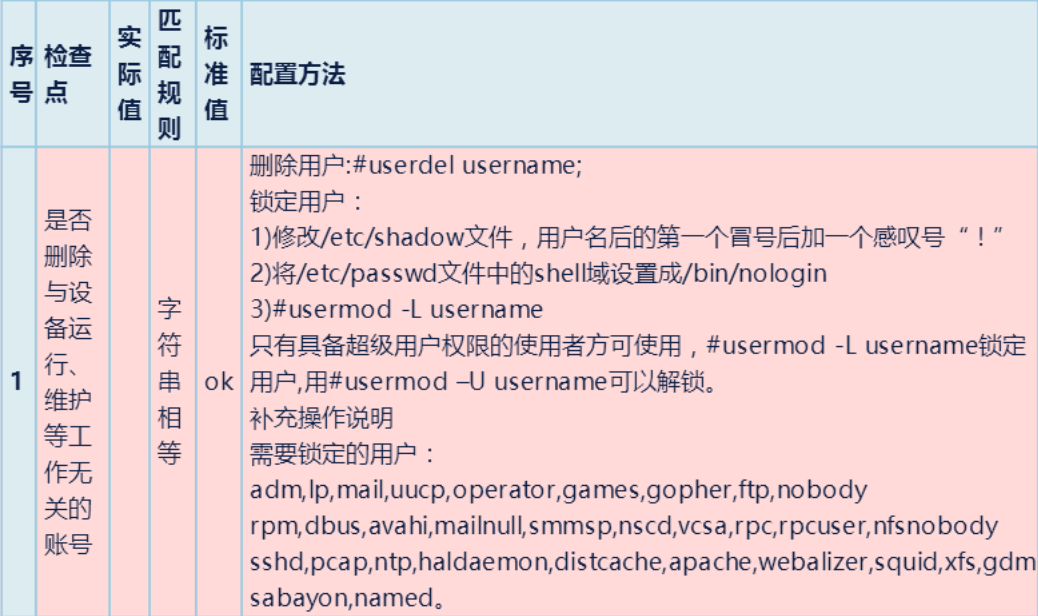
12.检查密码重复使用次数限制
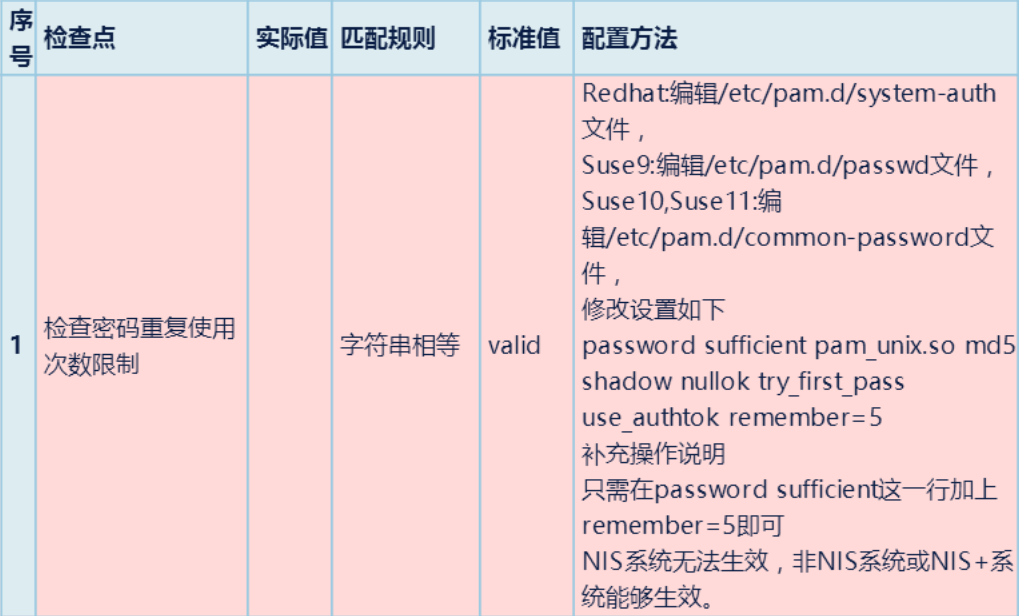
13.检查是否配置账户认证失败次数限制
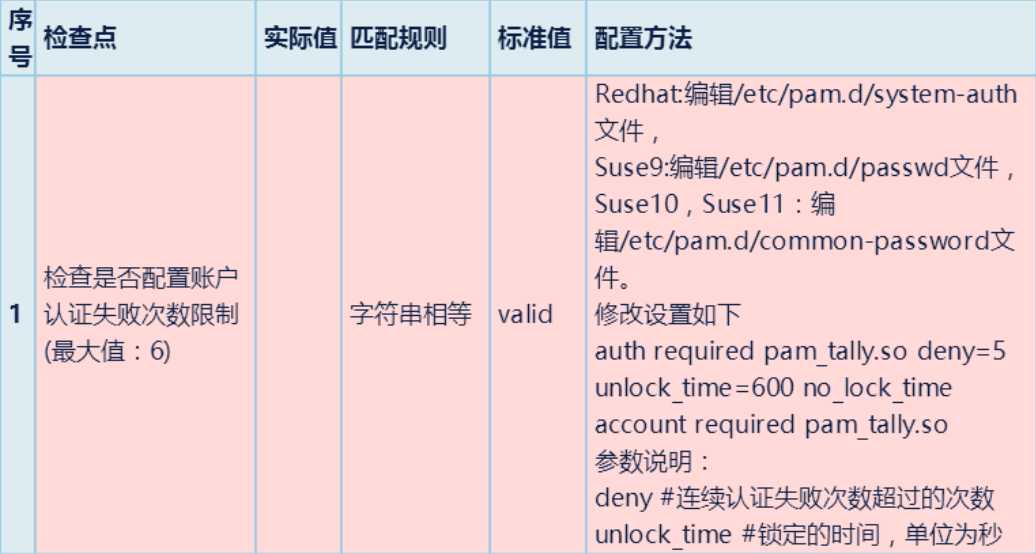
cd /etc/pam.d
if [ -f system-auth ];then
cp /etc/pam.d/system-auth /etc
#num=`grep -n "md5" /etc/system-auth | cut -d ":" -f 1`
#sed -i ''$num' r s/$/ remember=5' /etc/system-auth
kk=`cat -n /etc/system-auth | grep -v ".*#.*"| grep md5|awk '{print $1}'`
echo $kk
version="password sufficient pam_unix.so md5 shadow nullok try_first_pass use_authtok remember=500"
sed -i ""$kk"c $version" /etc/system-auth
letter=`cat -n /etc/system-auth |grep password | grep requisite | awk '{print $1}'`
sed -i ''$letter's/pam_cracklib.so/& ucredit=-1 lcredit=-1 dcredit=-1 /' /etc/pam.d/system-auth
fi
14.检查是否配置关闭IP伪装与绑定
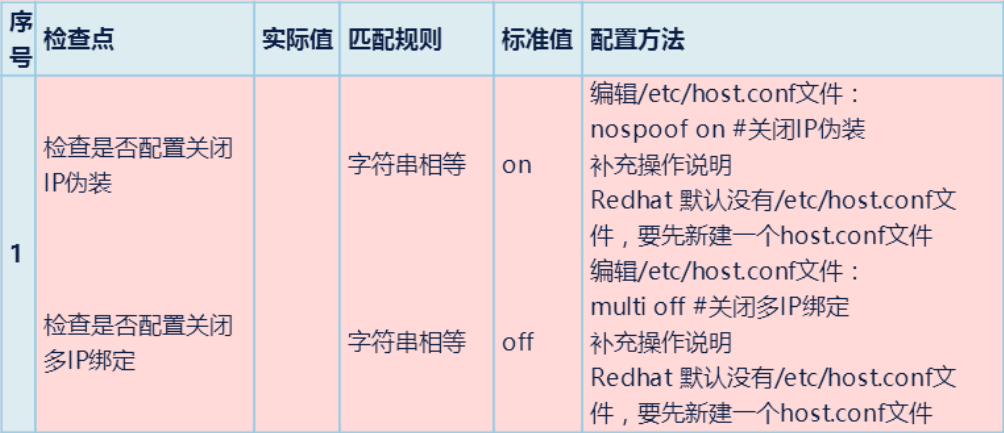
snu=`cat /etc/host.conf | awk '{print $2}'`
if [ "$snu" = "on" ]; then
echo "没有关闭ip伪装"
fi
sed -i 's/on/off/g' /etc/host.conf
echo " 关闭IP伪装完成"
15.检查/etc/hosts配置

if [ -f hosts.allow ];then
cp /etc/hosts.allow /etc/
echo "all:172.18.12.:all" >> /etc/hosts.allow
echo "sshd:172.18.12.:all" >> /etc/hosts.allow
fi
cd /etc
if [ -f hosts.deny ];then
cp /etc/hosts.deny /etc/
echo "all:all" >> /etc/hosts.deny
fi
16.
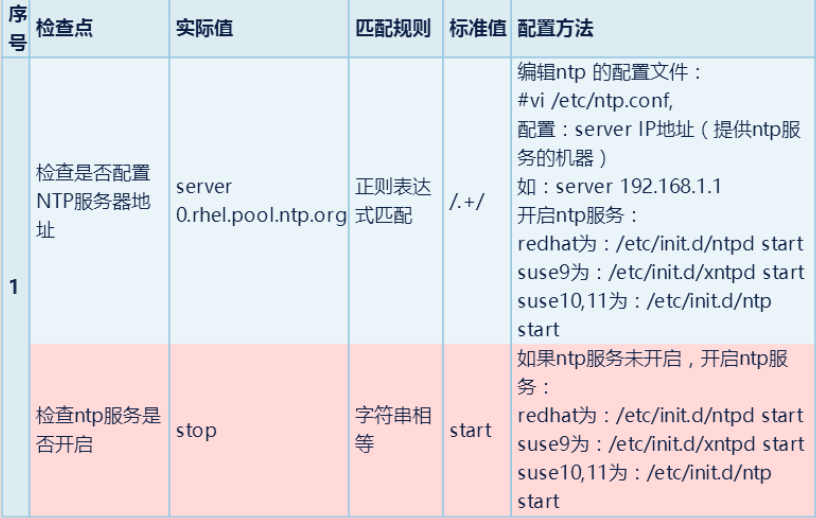
17.检查重要文件是否存在suid和sgid权限
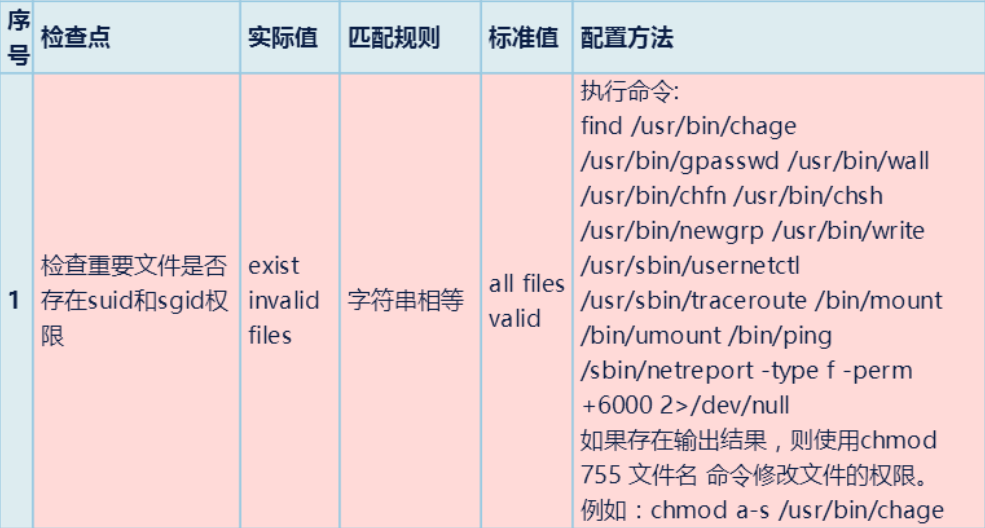
find /usr/bin/chage /usr/bin/gpasswd /usr/bin/wall /usr/bin/chfn /usr/bin/chsh /usr/bin/newgrp /usr/bin/write /usr/sbin/usernetctl /usr/sbin/traceroute /bin/mount /bin/umount /bin/ping /sbin/netreport -type f -perm +6000 2>/dev/null >file.txt
if [ -s file.txt ]; then
echo " find。。这条命令有输出"
for i in `cat file.txt`
do
chmod 755 $idoneelse
echo "find 。。这条命令没有输出"
fi
18.

19.权限设置
chmod 644 /etc/passwd
chmod 644 /etc/group
chmod 400 /etc/shadow
#chmod 600 /etc/xinetd.conf
chmod 644 /etc/services
chmod 600 /etc/security
chmod 600 /etc/grub.conf
chmod 600 /boot/grub/grub.conf
chmod 600 /etc/lilo.conf
echo "文件权限设置完成"
给出几个大佬的综合脚本:
1.
echo ---------------开始--------------------
echo ---------------aboutkey----------------
cd /etc
if [ -f login.defs ];then
cp /etc/login.defs /home/test1
MINDAY=`cat -n /home/test1/login.defs | grep -v ".*#.*"| grep PASS_MIN_DAYS|awk '{print $1}'`
sed -i ''$MINDAY's/.*PASS_MIN_DAYS.*/PASS_MIN_DAYS 6/' /home/test1/login.defs
WARNAGE=`cat -n /home/test1/login.defs | grep -v ".*#.*"| grep PASS_WARN_AGE|awk '{print $1}'`
sed -i ''$WARNAGE's/.*PASS_WARN.*/PASS_WARN_AGE 30/' /home/test1/login.defs
MAXDAY=`cat -n /home/test1/login.defs | grep -v ".*#.*"| grep PASS_MAX_DAYS|awk '{print $1}'`
sed -i ''$MAXDAY's/.*PASS_MAX.*/PASS_MAX_DAYS 90/' /home/test1/login.defs
MINLEN=`cat -n /home/test1/login.defs | grep -v ".*#.*"| grep PASS_MIN_LEN|awk '{print $1}'`
sed -i ''$MINDAY's/.*PASS_MIN_LEN.*/PASS_MIN_ LEN 6/' /home/test1/login.defs
fi
echo --------------------ok---------------------------
echo -------------------stop the del------------------------
cd /etc/init
if [ -f control-alt-delete.conf ];then
cp /etc/init/control-alt-delete.conf /home/test1
#delete=`grep -n "/sbin/shutdown -r now" /home/test1/control-alt-delete.conf | cut -d ":" -f 1`
#sed -i ''$delete' r s/^/#/' /home/test1/control-alt-delete.conf
#cp /etc/init/control-alt-delete.conf /home/test1
#num1=`grep -n "/sbin/shutdown" /home/test1/control-alt-delete.conf | cut -d "" -f 1`
#sed -i ''$num' r s/^/#/' /home/test1/control-alt-delete.conf
#a=`cat -n /home/test1/control-alt-delete.conf|grep -v "#" | grep "/sbin/shutdown" | awk '{print $1}'`
#text=`sed -n "$a"p /home/test1/control-alt-delete.conf`
#sed -i ''$a'c # '$text'' /home/test1/control-alt-delete.conf
a=`cat -n /home/test1/control-alt-delete.conf|grep -v "#" | grep /sbin/shutdown | awk '{print $1}'`
if [ -z $a ];then
echo ok
else
sed -i ''$a' s/^/#/' /home/test1/control-alt-delete.conf
fi
fi
echo ---------------------ok---------------------------------------
echo ------------------------grub and lilo key------------------------
grub="/home/test1/menu.lst"
if [ ! -x "$grub" ];then
touch "$grub"
echo password=123456 >> "$grub"
else
echo password=123456 >> "$grub"
fi
lilo="/home/test1/lilo.conf"
if [ ! -x "$lilo" ];then
touch "$lilo"
echo password=123456 >> "$lilo"
else
echo password=123456 >> "$lilo"
fi
echo ---------------------ok--------------------------------------
echo ----------------------the history of mouthpasswd------------------
cd /etc
if [ -f profile ];then
cp /etc/profile /home/test1
#num=`sed -n /home/test1/profile | grep HISTFILESIZE | awk '{print $1}'`
#/home/test1/profile | sed $num'c HISTFILESIZE=5'
echo "HISTFILESIZE=5" >> /home/test1/profile
echo "ulimit -S -c unlimited" >> /home/test1/profile
fi
echo -------------------------ok---------------------
echo ------------------------issue-----------------
#issu="/etc/issue.net"
cd /etc
if [ -f issue.net ];then
cp issue.net /home/test1/issue.net.bak
echo ok
fi
echo ok
if [ -f issue ];then
cp issue /home/test1/issue.bak
echo ok
fi
echo -----------------------allow/deny ip-------------------
cd /etc
if [ -f hosts.allow ];then
cp /etc/hosts.allow /home/test1
echo "all:172.18.12.:all" >> /home/test1/hosts.allow
echo "sshd:172.18.12.:all" >> /home/test1/hosts.allow
fi
cd /etc
if [ -f hosts.deny ];then
cp /etc/hosts.deny /home/test1
echo "all:all" >> /home/test1/hosts.deny
fi
echo -----------------ok------------------------
#/etc/init.d/xinetd restart
echo -----------------------------core dump-------------------
cd /etc/security
if [ -f limits.conf ];then
cp /etc/security/limits.conf /home/test1
echo "*soft core 0" >> /home/test1/limits.conf
echo "*hard core 0" >> /home/test1/limits.conf
fi
echo --------------ok-------------------------
echo ----------------------------passwdrepeat---------------------
cd /etc/pam.d
if [ -f system-auth ];then
cp /etc/pam.d/system-auth /home/test1
#num=`grep -n "md5" /home/test1/system-auth | cut -d ":" -f 1`
#sed -i ''$num' r s/$/ remember=5' /home/test1/system-auth
kk=`cat -n /home/test1/system-auth | grep -v ".*#.*"| grep md5|awk '{print $1}'`
echo $kk
version="password sufficient pam_unix.so md5 shadow nullok try_first_pass use_authtok remember=500"
sed -i ""$kk"c $version" /home/test1/system-auth
letter=`cat -n /home/test1/system-auth |grep password | grep requisite | awk '{print $1}'`
sed -i ''$letter's/pam_cracklib.so/& ucredit=-1 lcredit=-1 dcredit=-1 /' /etc/pam.d/system-auth
fi
echo -----------------ok--------------------
echo --------------------超出退出--------------
cd /etc
if [ -f profile ];then
cp /etc/profile /home/test1
echo "export TMOUT=600" >> /home/test1/profile
fi
echo ------------------ok-------------------
echo ------------------权限-------------------
chmod 644 /etc/passwd
chmod 644 /etc/group
chmod 400 /etc/shadow
#chmod 600 /etc/xinetd.conf
chmod 644 /etc/services
chmod 600 /etc/security
chmod 600 /etc/grub.conf
chmod 600 /boot/grub/grub.conf
chmod 600 /etc/lilo.conf
echo ------------------unmask--------------------
cp /etc/csh.cshrc /home/test1
cp /etc/csh.login /home/test1
cp /etc/bashrc /home/test1
cp /etc/profile /home/test1
sed -i '11 s/.*umask.*/umask 077/' /home/test1/csh.cshrc
sed -i '58 s/.*umask.*/umask 077/' /home/test1/csh.login
sed -i '66 s/.*UMASK.*/UMASK 077/' /home/test1/bashrc
sed -i '62s/.*umask.*/umask 077/' /home/test1/profile
echo --------------------before login banner-------------------
cd /etc
if [ -f ssh_banner ];then
touch /etc/ssh_banner
chown bin:bin /etc/ssh_banner
chmod 644 /etc/ssh_banner
echo "Authorized only.All activity will be monitored and reported" > /etc/ssh_banner
fi
echo -----------------------ok----------------------------
echo -------------------stop root ssh login------------------
cp /etc/pam.d/login /home/test1
echo "auth required pam_securetty.so" >> /home/test1/login
cp /etc/ssh/sshd_config /home/test1
echo "Banner /etc/ssh_banner" >> /home/test1/sshd_config
echo "PermitRootLogin no" >> /home/test1/sshd_config
service sshd restart
echo -------------------------ok-------------------
echo --------------------openssh----------------------------
openssh=`cat -n /home/test1/sshd_config | grep -v ".*#.*"| grep Protocol |awk '{print $1}'`
sed -i ''$openssh's/.*Protocol.*/Protocol 2/' /home/test1/sshd_config
echo -------------ok---------------------------
2.
#!/bin/bash read key echo "警告:本脚本只是一个检查的操作,未对服务器做任何修改,管理员可以根据此报告进行相应的设置。" echo ---------------------------------------主机安全检查----------------------- echo "系统版本" uname -a echo -------------------------------------------------------------------------- echo "本机的ip地址是:" ifconfig | grep --color "([0-9]{1,3}.){3}[0-9]{1,3}" echo -------------------------------------------------------------------------- awk -F":" '{if($2!~/^!|^*/){print "("$1")" " 是一个未被锁定的账户,请管理员检查是否需要锁定它或者删除它。"}}' /etc/shadow echo -------------------------------------------------------------------------- more /etc/login.defs | grep -E "PASS_MAX_DAYS" | grep -v "#" |awk -F' ' '{if($2!=90){print "/etc/login.defs里面的"$1 "设置的是"$2"天,请管理员改成90天。"}}' echo -------------------------------------------------------------------------- more /etc/login.defs | grep -E "PASS_MIN_LEN" | grep -v "#" |awk -F' ' '{if($2!=6){print "/etc/login.defs里面的"$1 "设置的是"$2"个字符,请管理员改成6个字符。"}}' echo -------------------------------------------------------------------------- more /etc/login.defs | grep -E "PASS_WARN_AGE" | grep -v "#" |awk -F' ' '{if($2!=10){print "/etc/login.defs里面的"$1 "设置的是"$2"天,请管理员将口令到期警告天数改成10天。"}}' echo -------------------------------------------------------------------------- grep TMOUT /etc/profile /etc/bashrc > /dev/null|| echo "未设置登录超时限制,请设置之,设置方法:在/etc/profile或者/etc/bashrc里面添加TMOUT=600参数" echo -------------------------------------------------------------------------- if ps -elf |grep xinet |grep -v "grep xinet";then echo "xinetd 服务正在运行,请检查是否可以把xinnetd服务关闭" else echo "xinetd 服务未开启" fi echo -------------------------------------------------------------------------- echo "查看系统密码文件修改时间" ls -ltr /etc/passwd echo -------------------------------------------------------------------------- echo "查看是否开启了ssh服务" if service sshd status | grep -E "listening on|active (running)"; then echo "SSH服务已开启" else echo "SSH服务未开启" fi echo -------------------------------------------------------------------------- echo "查看是否开启了TELNET服务" if more /etc/xinetd.d/telnetd 2>&1|grep -E "disable=no"; then echo "TELNET服务已开启 " else echo "TELNET服务未开启 " fi echo -------------------------------------------------------------------------- echo "查看系统SSH远程访问设置策略(host.deny拒绝列表)" if more /etc/hosts.deny | grep -E "sshd: ";more /etc/hosts.deny | grep -E "sshd"; then echo "远程访问策略已设置 " else echo "远程访问策略未设置 " fi echo -------------------------------------------------------------------------- echo "查看系统SSH远程访问设置策略(hosts.allow允许列表)" if more /etc/hosts.allow | grep -E "sshd: ";more /etc/hosts.allow | grep -E "sshd"; then echo "远程访问策略已设置 " else echo "远程访问策略未设置 " fi echo "当hosts.allow和 host.deny相冲突时,以hosts.allow设置为准。" echo ------------------------------------------------------------------------- echo "查看shell是否设置超时锁定策略" if more /etc/profile | grep -E "TIMEOUT= "; then echo "系统设置了超时锁定策略 " else echo "未设置超时锁定策略 " fi echo ------------------------------------------------------------------------- echo "查看syslog日志审计服务是否开启" if service syslog status | egrep " active (running";then echo "syslog服务已开启" else echo "syslog服务未开启,建议通过service syslog start开启日志审计功能" fi echo ------------------------------------------------------------------------- echo "查看syslog日志是否开启外发" if more /etc/rsyslog.conf | egrep "@....|@...|@..|*.* @....|*.* @...|*.* @..";then echo "客户端syslog日志已开启外发" else echo "客户端syslog日志未开启外发" fi echo ------------------------------------------------------------------------- echo "查看passwd文件中有哪些特权用户" awk -F: '$3==0 {print $1}' /etc/passwd echo ------------------------------------------------------------------------ echo "查看系统中是否存在空口令账户" awk -F: '($2=="!!") {print $1}' /etc/shadow echo "该结果不适用于Ubuntu系统" echo ------------------------------------------------------------------------ echo "查看系统中root用户外连情况" lsof -u root |egrep "ESTABLISHED|SYN_SENT|LISTENING" echo ----------------------------状态解释------------------------------ echo "ESTABLISHED的意思是建立连接。表示两台机器正在通信。" echo "LISTENING的" echo "SYN_SENT状态表示请求连接" echo ------------------------------------------------------------------------ echo "查看系统中root用户TCP连接情况" lsof -u root |egrep "TCP" echo ------------------------------------------------------------------------ echo "查看系统中存在哪些非系统默认用户" echo "root:x:“该值大于500为新创建用户,小于或等于500为系统初始用户”" more /etc/passwd |awk -F ":" '{if($3>500){print "/etc/passwd里面的"$1 "的值为"$3",请管理员确认该账户是否正常。"}}' echo ------------------------------------------------------------------------ echo "检查系统守护进程" more /etc/xinetd.d/rsync | grep -v "^#" echo ------------------------------------------------------------------------ echo "检查系统是否存在入侵行为" more /var/log/secure |grep refused echo ------------------------------------------------------------------------ echo "-----------------------检查系统是否存在PHP脚本后门---------------------" if find / -type f -name *.php | xargs egrep -l "mysql_query($query, $dbconn)|专用网马|udf.dll|class PHPzip{|ZIP压缩程序 荒野无灯修改版|$writabledb|AnonymousUserName|eval(|Root_CSS()|黑狼PHP木马|eval(gzuncompress(base64_decode|if(empty($_SESSION|$shellname|$work_dir |PHP木马|Array("$filename"| eval($_POST[|class packdir|disk_total_space|wscript.shell|cmd.exe|shell.application|documents and settings|system32|serv-u|提权|phpspy|后门" |sort -n|uniq -c |sort -rn 1>/dev/null 2>&1;then echo "检测到PHP脚本后门" find / -type f -name *.php | xargs egrep -l "mysql_query($query, $dbconn)|专用网马|udf.dll|class PHPzip{|ZIP压缩程序 荒野无灯修改版|$writabledb|AnonymousUserName|eval(|Root_CSS()|黑狼PHP木马|eval(gzuncompress(base64_decode|if(empty($_SESSION|$shellname|$work_dir |PHP木马|Array("$filename"| eval($_POST[|class packdir|disk_total_space|wscript.shell|cmd.exe|shell.application|documents and settings|system32|serv-u|提权|phpspy|后门" |sort -n|uniq -c |sort -rn find / -type f -name *.php | xargs egrep -l "mysql_query($query, $dbconn)|专用网马|udf.dll|class PHPzip{|ZIP压缩程序 荒野无灯修改版|$writabledb|AnonymousUserName|eval(|Root_CSS()|黑狼PHP木马|eval(gzuncompress(base64_decode|if(empty($_SESSION|$shellname|$work_dir |PHP木马|Array("$filename"| eval($_POST[|class packdir|disk_total_space|wscript.shell|cmd.exe|shell.application|documents and settings|system32|serv-u|提权|phpspy|后门" |sort -n|uniq -c |sort -rn |awk '{print $2}' | xargs -I{} cp {} /tmp/ echo "后门样本已拷贝到/tmp/目录" else echo "未检测到PHP脚本后门" fi echo ------------------------------------------------------------------------ echo "-----------------------检查系统是否存在JSP脚本后门---------------------" find / -type f -name *.jsp | xargs egrep -l "InputStreamReader(this.is)|W_SESSION_ATTRIBUTE|strFileManag|getHostAddress|wscript.shell|gethostbyname|cmd.exe|documents and settings|system32|serv-u|提权|jspspy|后门" |sort -n|uniq -c |sort -rn 2>&1 find / -type f -name *.jsp | xargs egrep -l "InputStreamReader(this.is)|W_SESSION_ATTRIBUTE|strFileManag|getHostAddress|wscript.shell|gethostbyname|cmd.exe|documents and settings|system32|serv-u|提权|jspspy|后门" |sort -n|uniq -c |sort -rn| awk '{print $2}' | xargs -I{} cp {} /tmp/ 2>&1 echo ------------------------------------------------------------------------ echo "----------------------检查系统是否存在HTML恶意代码---------------------" if find / -type f -name *.html | xargs egrep -l "WriteData|svchost.exe|DropPath|wsh.Run|WindowBomb|a1.createInstance|CurrentVersion|myEncString|DropFileName|a = prototype;|204.351.440.495.232.315.444.550.64.330" 1>/dev/null 2>&1;then echo "发现HTML恶意代码" find / -type f -name *.html | xargs egrep -l "WriteData|svchost.exe|DropPath|wsh.Run|WindowBomb|a1.createInstance|CurrentVersion|myEncString|DropFileName|a = prototype;|204.351.440.495.232.315.444.550.64.330" |sort -n|uniq -c |sort -rn find / -type f -name *.html | xargs egrep -l "WriteData|svchost.exe|DropPath|wsh.Run|WindowBomb|a1.createInstance|CurrentVersion|myEncString|DropFileName|a = prototype;|204.351.440.495.232.315.444.550.64.330" |sort -n|uniq -c |sort -rn| awk '{print $2}' | xargs -I{} cp {} /tmp/ echo "后门样本已拷贝到/tmp/目录" else echo "未检测到HTML恶意代码" fi echo "----------------------检查系统是否存在perl恶意程序----------------------" if find / -type f -name *.pl | xargs egrep -l "SHELLPASSWORD|shcmd|backdoor|setsockopt|IO::Socket::INET;" 1>/dev/null 2>&1;then echo "发现perl恶意程序" find / -type f -name *.pl | xargs egrep -l "SHELLPASSWORD|shcmd|backdoor|setsockopt|IO::Socket::INET;"|sort -n|uniq -c |sort -rn find / -type f -name *.pl | xargs egrep -l "SHELLPASSWORD|shcmd|backdoor|setsockopt|IO::Socket::INET;"|sort -n|uniq -c |sort -rn| awk '{print $2}' | xargs -I{} cp {} /tmp/ echo "可疑样本已拷贝到/tmp/目录" else echo "未检测到perl恶意程序" fi echo "----------------------检查系统是否存在Python恶意程序----------------------" find / -type f -name *.py | xargs egrep -l "execCmd|cat /etc/issue|getAppProc|exploitdb" |sort -n|uniq -c |sort -rn find / -type f -name *.py | xargs egrep -l "execCmd|cat /etc/issue|getAppProc|exploitdb" |sort -n|uniq -c |sort -rn| awk '{print $2}' | xargs -I{} cp {} /tmp/ echo ------------------------------------------------------------------------ echo "-----------------------检查系统是否存在恶意程序---------------------" find / -type f -perm -111 |xargs egrep "UpdateProcessER12CUpdateGatesE6C|CmdMsg.cpp|MiniHttpHelper.cpp|y4'r3 1uCky k1d!|execve@@GLIBC_2.0|initfini.c|ptmalloc_unlock_all2|_IO_wide_data_2|system@@GLIBC_2.0|socket@@GLIBC_2.0|gettimeofday@@GLIBC_2.0|execl@@GLIBC_2.2.5|WwW.SoQoR.NeT|2.6.17-2.6.24.1.c|Local Root Exploit|close@@GLIBC_2.0|syscall(\__NR\_vmsplice,|Linux vmsplice Local Root Exploit|It looks like the exploit failed|getting root shell" 2>/dev/null echo ------------------------------------------------------------------------ echo "检查网络连接和监听端口" netstat -an echo "--------------------------路由表、网络连接、接口信息--------------" netstat -rn echo "------------------------查看网卡详细信息--------------------------" ifconfig -a echo ------------------------------------------------------------------------ echo "查看正常情况下登录到本机的所有用户的历史记录" last echo ------------------------------------------------------------------------ echo "检查系统中core文件是否开启" ulimit -c echo "core是unix系统的内核。当你的程序出现内存越界的时候,操作系统会中止你的进程,并将当前内存状态倒出到core文件中,以便进一步分析,如果返回结果为0,则是关闭了此功能,系统不会生成core文件" echo ------------------------------------------------------------------------ echo "检查系统中关键文件修改时间" ls -ltr /bin/ls /bin/login /etc/passwd /bin/ps /usr/bin/top /etc/shadow|awk '{print "文件名:"$8" ""最后修改时间:"$6" "$7}' echo "ls文件:是存储ls命令的功能函数,被删除以后,就无法执行ls命令,黑客可利用篡改ls文件来执行后门或其他程序。 login文件:login是控制用户登录的文件,一旦被篡改或删除,系统将无法切换用户或登陆用户 user/bin/passwd是一个命令,可以为用户添加、更改密码,但是,用户的密码并不保存在/etc/passwd当中,而是保存在了/etc/shadow当中 etc/passwd是一个文件,主要是保存用户信息。 sbin/portmap是文件转换服务,缺少该文件后,无法使用磁盘挂载、转换类型等功能。 bin/ps 进程查看命令功能支持文件,文件损坏或被更改后,无法正常使用ps命令。 usr/bin/top top命令支持文件,是Linux下常用的性能分析工具,能够实时显示系统中各个进程的资源占用状况。 etc/shadow shadow 是 /etc/passwd 的影子文件,密码存放在该文件当中,并且只有root用户可读。" echo -------------------------------------------------------------------------- echo "-------------------查看系统日志文件是否存在--------------------" log=/var/log/syslog log2=/var/log/messages if [ -e "$log" ]; then echo "syslog日志文件存在! " else echo "/var/log/syslog日志文件不存在! " fi if [ -e "$log2" ]; then echo "/var/log/messages日志文件存在! " else echo "/var/log/messages日志文件不存在! " fi echo -------------------------------------------------------------------------- echo "检查系统文件完整性2(MD5检查)" echo "该项会获取部分关键文件的MD5值并入库,默认保存在/etc/md5db中" echo "如果第一次执行,则会提示md5sum: /sbin/portmap: 没有那个文件或目录" echo "第二次重复检查时,则会对MD5DB中的MD5值进行匹配,来判断文件是否被更改过" file="/etc/md5db" if [ -e "$file" ]; then md5sum -c /etc/md5db 2>&1; else md5sum /etc/passwd >>/etc/md5db md5sum /etc/shadow >>/etc/md5db md5sum /etc/group >>/etc/md5db md5sum /usr/bin/passwd >>/etc/md5db md5sum /sbin/portmap>>/etc/md5db md5sum /bin/login >>/etc/md5db md5sum /bin/ls >>/etc/md5db md5sum /bin/ps >>/etc/md5db md5sum /usr/bin/top >>/etc/md5db; fi echo ---------------------------------------------------------------------- echo "------------------------主机性能检查--------------------------------" echo "CPU检查" dmesg | grep -i cpu echo ----------------------------------------------------------------------- more /proc/cpuinfo echo ----------------------------------------------------------------------- echo "内存状态检查" vmstat 2 5 echo ----------------------------------------------------------------------- more /proc/meminfo echo ----------------------------------------------------------------------- free -m echo ----------------------------------------------------------------------- echo "文件系统使用情况" df -h echo ----------------------------------------------------------------------- echo "网卡使用情况" lspci -tv echo ---------------------------------------------------------------------- echo "查看僵尸进程" ps -ef | grep zombie echo ---------------------------------------------------------------------- echo "耗CPU最多的进程" ps auxf |sort -nr -k 3 |head -5 echo ---------------------------------------------------------------------- echo "耗内存最多的进程" ps auxf |sort -nr -k 4 |head -5 echo ----------------------------------------------------------------------